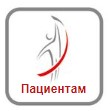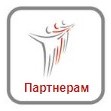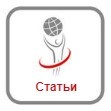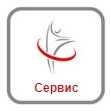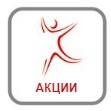The short term effects of the Decompression (KNX 7000®) and Traction Device on Pain in Patients with Chronic low back pain with or without Radicular pain
So‐Hyun Park, PT. PhD; Chul‐Seoung Kim, PhD; Dong‐Gyu Lee, MD1; Sang‐Ho Ahn, MD, PhD1
Medical Devices Clinical Trial Center of Yeungnam University Hospital; 1Department of Physical Medicine and Rehabilitation, College of Medicine, Yeungnam University; 1Department of Physical Medicine and Rehabilitation, College of Medicine, Yeungnam University; 2Institute of Biomedical Engineering Yeungnam University
Purpose: The purpose of this study is to evaluate the short term effects of the traction and decompression device, which is a newly developed domestic medical device, on pain and functional activity in patients with chronic low back pain with or without radicular pain.
Methods: Forty patients with chronic low back pain were included and allocated to decompression (n=20) and traction groups (n=20). They received decompression or traction therapy for 20 minutes a day, 3 days per week for two weeks. For evaluating pain and functional activity, a visual analogue scale (VAS) for low back pain and the Oswestry back pain disability index (ODI) were obtained on pre‐treatment, and at 6, 12 and 15 days after treatment. Patients’satisfaction levels were measured 15 days after treatment.
Results: VAS was significantly decreased at 12 days and 15 days post‐treatment compared to pre‐treatment in both groups (p<0.05). ODI was significantly decreased at 12 days and 15 days post‐treatment compared to pre‐treatment in the decompression group (p<0.05). However, there was no significant difference between the two groups in the VAS and ODI scales (p>0.05). Patients’ satisfaction levels were significantly higher in the decompression group than in the traction group (p<0.05)
Conclusion: These findings suggest that decompression therapy might be effective for increasing functional activity in patients with low back pain and could provide patients with higher satisfaction than traction therapy. This study provided validity data for the therapeutic effects of the decompression device in patients with low back pain and it will be useful for medical cost development and patient education of this device.
Keywords: Low‐back pain, Decompression, Traction, Clinical trial
1. Introduction
Low-back pain is one of the most common chronic diseases due to modern society’s seated life; 20 to 30% of total population experienced low-back pain by disc, and the occurrence increases as they get older and continued management is required because of frequent relapse.1. As medical cost and loss of labor ability increase followed by the low-back pain, there is a growing interest over low-back pain.2.
For the cause of low-back pain, disc disability is the most common one. Pain caused by disc disability is twofold, which is low back pain occurred by stimulating pain nerve spread along the spine, and Radicular pain occurred by pressing nerve muscle.3. For general treatment of the pain caused by disc disability, there are surgical treatment and preservation treatment. Surgical treatment is invasive and can have dynamic change, so it is recommended when there is no effect of non-surgical treatment, and most patients undergo non-surgical treatment like rest, medicine and injection, electric treatment, exercise treatment and traction treatment. 3-6. Among them, traction is secures inter-vertebral foramen, relieves disc escape, decreases inner pressure to reduce nerve suppression so pain is relieved, and it is clinically used, widespread. 7,8. Until now, most traction treatment by using machine pulls chest and pelvis to lead overall traction of lumbar parts so it is impossible to treat only the parts necessary of traction. 9,10. In order to lead traction on the parts, which are origin of problems, stronger traction is conducted and result in damage of the weakened soft-tissue, traction of nearby instable parts and secondary responsive muscle contraction of the parts other than the origin of pain, so this is not effective for leading decompression inside disc and may worsen the pain. 9-11. In contrast, traction by hand can treat the lumbar parts that are the origin of pain, but it cannot continue for long time. 10,12. Recently, there are decompression treatment to lead traction in certain parts by leading dorsiflexion of lumbar parts by selecting the parts to tract. 7,13-16. Decompression treatment uses machine to reduce pressure of disc continuously, and by enlarging the space inside dice, it restores the height of disc, 16 and since it can decompress effectively by selecting the parts with small traction power, it does not cause secondary muscle tension. 8,14. There are researches on effect of pain relief by non-surgical decompression treatment, but they are retrospective study, 15 and while some studies present increased height of disc, these studies are conducted in single group, 7,16 and in comparative study of traction and decompression, functional analysis of low-back pain patients is not presented, 14 so there is a lack of progressive and systematic study on the effect on pain and function of low-back pain due to disc. Therefore, in this research, among the chronic low-back pain patients including Radicular pain, systematic and controlled clinical test is conducted to find the effect on physical functional index by low-back pain and that of short-term decompression and existing traction on the low-back pain.
II. Research Method
1. Design of Research and Object
This study is prospective, randomly assigned, single blind clinical test among forty participants selected through history, scientific test and MRI among two hundred patients visiting xx University Hospital for low-back pain from September 24, 2009 to June 24, 2010. Participants were divided into the decompression treatment group and traction treatment group, randomly, and 20 was assigned for each group.
In order to calculate the number of subject, NCSS 2007 program (NCSS, USA) was used. For first effectiveness evaluation index, Visual Analogue Scale (VAS) is selected, and difference of VAS before and after treatment was set as 2, and standard deviation was set as 3, and twenty subjects per group was calculated by considering level of significance 0.05, test ability 80% and drop out rate as 10%.
Selection standard was 1) adult male and female with low-back pain or radicular pain, between 18 to 70, 2) those who were diagnosed as lumbosacral disc dislocation by MRI, 3) those who have 20% or more in Oswestry back pain disability index, ODI, 4) and those who have continued pain for more than six months. Exception criteria was 1) those who received surgery on spine, hip joint and pelvis within last six months, 2) those who were diagnosed as spine parts instability, 3) those who were diagnosed as spine separation and Spondylolisthesis, 4) inflammatory spine disease, 5) scoliosis, 6) degenerative kyphosis, 7) those who have received spine surgery within last two weeks, 8) those who have tumor in spine or spinal cord, 9) and pregnant women.
For random assignment of the participants, forty random code by using Excel 2007 (Microsoft, USA) were created, and nurses with no relationship with the research assigned random numbers in the order of registration to assign to decompression and traction treatment groups. After random assignment, among forty participants, three in decompression and for in traction groups drop out. The reason of drop out of two decompression group members and four traction participants was dissatisfaction of treatment effect, and one dropped out because of mental disease (Figure 1).
This clinical study was approved by Yeongnam University Hospital IRB, and all participants were explained fully on the purpose and method of the research and gave approval to participate.
2. Treatment mediation
For all participants, total of six treatment medication (twenty minutes per day, once every two days and for two weeks) beginning from the first visit, was conducted. For treatment medication, among the decompression group, decompression device (KNX-7000, Hanmed, Korea) was applied. In supine posture, feet were fixed and the length of legs was set comfortably, and then doctor and physical therapist fixed the parts necessary of treatment and roller location of the mattress after check.
As program is undertaken, gradient of mattress was selected as for traction with distraction force by 30% of the body weight, and as roller operates, lumbar extension is led to result in decompression of the selected part. Decompressor’s hip joint extension and external bending function for stretching was not used. Among the traction treatment group, OZ Orthotrac OL140 (Ozi-Giken Co. Ltd. Japana) which is generally used in physical therapist lab, and in supine, knee is bended 70°. Traction’s hold time and rest time ratio was set 60:30 sec and traction power used during the rest time was set as half of the power during hold time. Distraction force applied to the two groups is supplied as 30% of the body weight.
3. Measuring device
In order to judge the treatment effect, ODI and VAS were surveyed before treatment, six day after treatment stated, 12 days after and 15 days after. Also, after 15 days of treatment started, satisfaction survey was taken. For VAs, 100mm ruler, where one end is ‘not painful’, and the other end is indicated the worst pain imaginable’, and patients picked level. ODI survey was composed of nine items, to evaluate the disability of physical function due to low-back pain, and each item was given 0 to 5, and scores were combined and indicated in percentage. 17. In order to survey satisfaction on treatment, questionnaire, which was divided into excellent (4points), good (3), fair (2) and poor (1), and the two groups were compared. 18. Excellent is the patient is satisfied with the treatment result as expected, good is the patient is willing to take the treatment again if pain reoccurs, even though the result is not as good as expected, fair is there was some effect but would not choose to take the treatment, and poor is the effect is same as old treatment or worse.
3. Data Analysis
For evaluation variable of each group before treatment, it is checked whether there is difference between group through independent t-test and chi-squire test. Analysis was conducted following ‘per-protocol’ which exempts the drop-out participant’s result. To analyze inside and between-group difference of ODI and VAS, two-way repeated measure ANOVA was used. To verify the difference between measurement dates within groups, one-way repeated measure ANOVA was used. To analyze group difference of two-way repeated measure ANOVA, as post-hoc test, LSD test was used, and to test difference within group of one-way repeated measure ANOVA, multiple comparison was conducted. For satisfaction survey, it did not satisfy regular test, so Wilcoxon rank sum test, which is non parametric test, was used. All analysis was done with less than 0.05 level of significance and program used SPSS 12.0 for windows.
III. Result
1. Research Subject’s Test for Homogeneity
General characteristics of the participants of this study is same as Table 1. Average age of the 33 subjects is 45 for decompression group and 51 for traction group, and there was no significant difference between the two groups (p>0.05).
(Table 1)
2. Between-group, Inside Group Pain Change
There was significant difference by timing of visual analogue scale in both groups, (p<0.05), but there were no meaningful group difference and interaction (p>0.05) (Table 2).
3. Change of Disability Index of Physical Function by Low-back Pain Between and Inside Group
There was meaningful difference by timing of ODI among decompression group (p<0.05), but there was not in traction group (p>0.05), and there was no meaningful interaction and group difference between traction and decompression groups (p>0.05) (Table 3).
4.Satisfaction Comparison between Groups
As a result of satisfaction comparison between groups, satisfaction of treatment in decompression group was higher; in decompression group average 2.94, and in traction group average 2.29 (p<0.05) (Table 4).
IV. Consideration
This study was conducted through controlled research method of random selection and single blind to do decompression and normal traction treatment for chronic low-back pain patients, and as a result, both treatments were found to have effective pain, but decompression is more effective for short-term functional improvement and satisfaction by patients.
In this study, pain was reduced after 12 days of treatment compared to before-treatment, in both groups, and physical function improved significantly after 12 days, so it was found that decompression treatment was effective for short-term functional improvement. The decompression device used in this study includes decompression using lumbar extension of selected parts by using roller and traction by mattress gradient. Fritz et al 19 suggested that it was more effective to do both traction and extension than only traction treatment, and Park and Kim 14 suggested that decompression treatment was more effective than traction by undertaking decompression and traction treatments for disc dislocation patients and pain, disc dislocation straight leg raising test and reporting straight leg raising and disc dislocation improved as pain was relieved during decompression and, during traction, pain was relieved but there was no meaningful difference. Also at other studies, retrospective study of ninety four intervertebral disc subacute and chronic patients’ decompression treatment found pain level was reduced significantly, suggesting that decompression treatment for low-back pain patients was effective for pain and function. 15. When traction force was applied to 100 pound with decompression device, inside pressure of intervertebral pressure was gradually reduced 8, and as pain was relieved by decompression treatment, intervertebral disc height was increased, so it is thought that decompression treatment relieves nerve pressure by securing intervertebral disc space and reducing stress of intervertebral disc through effective decompression, and relieves pain by nutrient supply. 11, 16. Noteworthy thing in this research was that VAS result was similar in two groups, but only decompression group showed meaningful difference in ODI. Devine et al 20 recommended to use the two indexes separately, to analyze pain and function, since the two do not have strong correlation, while both are used for low-back pain, generally. Also, ODI has small scale of change during non-surgical treatment, 21, and minimal clinically important change (MCIC) of ODI is suggested as 10 to 20 points depending on disease and surgery 22-23. Given that, the fact that ODI difference between before and twelve weeks after of decompression treatment, which is preservation treatment, is 9 point, means decompression is better for functional improvement and ODI is more sensitive than VAS. In patient satisfaction test conducted three days after the end of treatment, decompression treatment was significantly higher than traction, and there were two drop outs in decompression while there were four in traction, so it was found that satisfaction of decompression was higher. Satisfaction of traction was 2.29, close to dissatisfaction, but decompression’s satisfaction degree was 2.94, relatively satisfied and patients were willing to take the treatment although the result was not as expected. Given that this survey was conducted among the patients with longer than six months of chronic low-back pain due to disc dislocation, satisfaction of decompression was relatively high. The research did not conduct quantitative analysis like change of muscle tension, which influences low back pain, intervertebral disc height and disc internal pressure, and could not find accurate mechanism of decompression treatment, and satisfaction survey item was not varied, so subjectivity was insufficient. Recently, various types of decompression and traction were used clinically, but it is hard to provide scientific basis on single preservation treatment effect excluding medicine or exercise effect, due to treatment conditions. This study could find that decompression is better than traction to improve function due to pain and has higher satisfaction among the patients with intervertebral disc dislocation through systematic and controlled clinical test of new type of domestically made decompression device. This kind of study could be used as valid basic data to calculate treatment cost and patient education by suggesting clinical effect of domestic decompression device, and providing scientific basis on the physical therapy method widely used for low-back pain patients.
Acknowledgements
This study was conducted by support of the Ministry of Health and Welfare’s Health-Medical Research Development Project.





